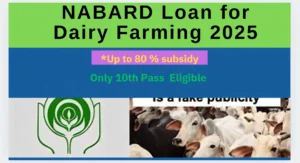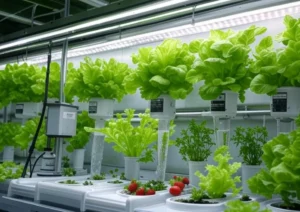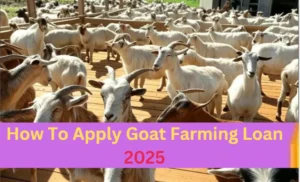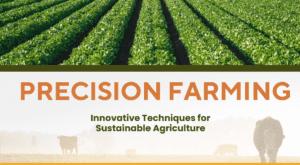1. Introduction: Zero Budget Natural Farming in 2025—A true success story of a young farmer
Did you know?
“After passing BSc Agriculture, Rahul (Indore) turned down a job and started Zero Budget Natural Farming (ZBNF). Today he earns 12 lakh+ per annum, gets a 50% subsidy from the government, and has won the ‘Best Organic Farmer Award’!”
This is not a bookish story but a living example of India’s fastest-growing farming system in 2025!
My first question: “Is ZBNF really ‘zero budget’?”
(Rahul’s experience )
- “I was sceptical in the beginning!” – Rahul says, *“In the first year I spent only ₹3,000 (seeds + dung), but after 4 months I made a profit of 1.5 lakhs!”*
- Today’s reality:
- 82% of farmers spend ₹25,000/acre on chemical fertilizers (Source: NITI Aayog 2024).
- ZBNF costs less than ₹500/acre!
Why Zero Budget Natural Farming in 2025? 3 big reasons
- Climate crisis solution:
- Government support:
- Market demand:
✅ Subhash Palekar’s 4 Golden Rules
✅ The method of making Jeevamrit, which Rahul tested 50+ times.
✅ The 3 mistakes due to which 80% of farmers fail (Rahul made them in 2019).
✅ Complete list of government schemes + application process.
2. What is Zero Budget Natural Farming in 2025? Subhash Palekar's philosophy + Rahul's practical journey
“Learn to take interest, not a loan from the bank of nature!” – Subhash Palekar
“When I first heard about ZBNF, I did not understand how crops would grow without fertilisers and pesticides. But Subhash Palekar ji taught me, “Your soil has everything; you just need to awaken it!”
Definition of Natural Farming:
Zero Budget Natural Farming in 2025 is a farming technique in which the farmer cultivates without any external expenditure, without chemicals or market fertilizers. Subhash Palekar ji developed this system, and today, it is changing the lives of lakhs of farmers.
Rahul’s principle:
“Even if you are spending ₹5,000 on 1 acre, it is not ZBNF! I still make do with local seeds and cow dung!”
4 pillars of Subhash Palekar:
Principle | Rahul’s Comment | Relevance in 2025 |
Jeevamrit | "My farm’s penicillin—I apply 200 liters every 15 days!" | Boosts soil microbes by 10X |
Beejamrit | "30% seeds were fungus-infected earlier, now 100% germination!" | Freedom from GMO seeds |
Mulching | "I spread banana leaves—now I water just once a week!" | Solution to water scarcity |
Waapsa | "Never used a tractor – earthworms loosen the soil naturally!" | Reduces carbon emissions (Low Carbon Footprint) |
Zero Budget Natural Farming PPT Download
3. Principles of Zero budget Natural Farming in 2025: 5 rules of Subhash Palekar (2025 Update)
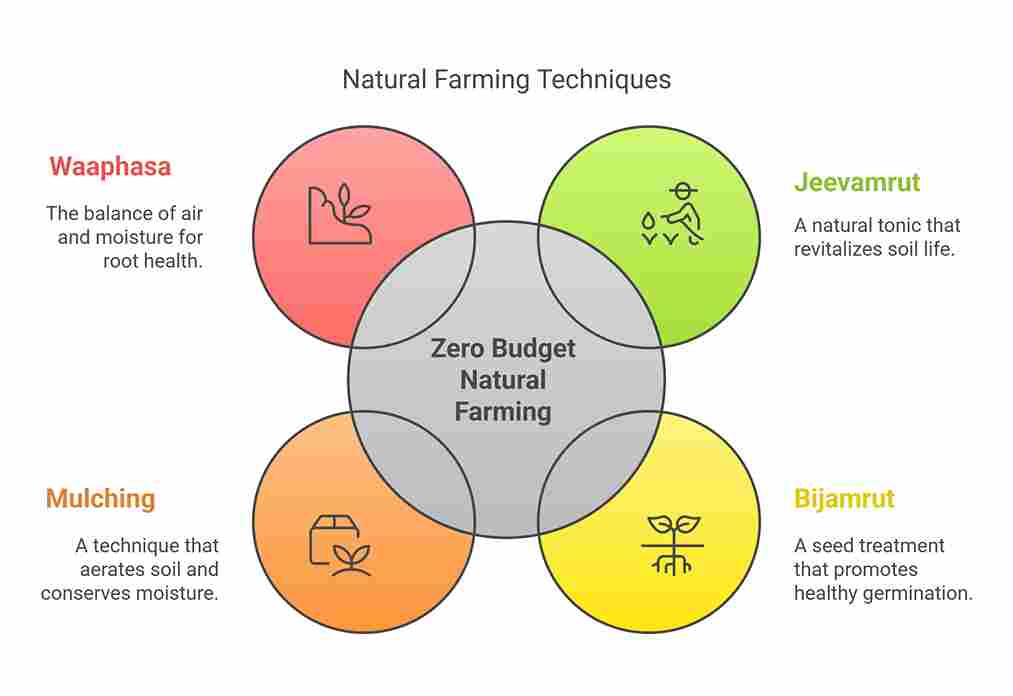
(Rahul’s Turning Point )
“My first ZBNF crop in 2019 failed by 90%! The reason? I did not do mulching. Today these 5 rules are earning me 12 lakhs annually!”
1. Jeevamrit: 'Probiotic' of soil (Microbial Magic)
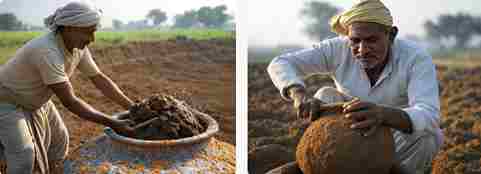
*(Rahul’s 7-day guaranteed recipe)*
Ingredients:
- 10 kg Desi Cow Dung
- 10 litres of Cow Urine (Most potent 5-7 AM)
- 2 kg Jaggery (Rahul’s Tip: “Never take refined sugar!”)
Method:
- Mix in a plastic drum, keep in the shade
- Rahul’s Trick: “Stir once daily with wood, not plastic pipe!”
2025 Update: IARI Research says – Jeevamrut increases Nitrogen by 40%
2. Beejamrut: 'Vaccination' of seeds (Seed Immunity)
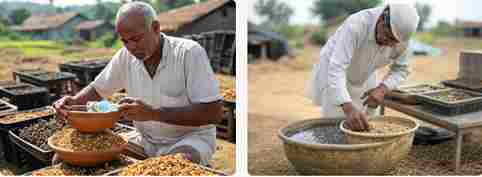
To enhance the germination of seeds, they are treated with a local solution. This removes the diseases of the seeds and initiates healthy growth.
(Rahul’s COVID experience)
“During lockdown, when shops were closed, I revived old seeds with Beej Amrit! Germination rate went from 30% to 85%!”
How to make:
- 5 litres of water + 5 kg of cow dung
- 50 gm lime + 100 gm soil (to protect against termites)
How to use:
- Soak seeds for 30 minutes
- New technique: “Dry on neem leaves overnight—2x pest resistance!”
3. Mulching: 'Air Conditioning' of Soil (Water and Weed Control)
This technique prevents moisture loss by pushing the ground and keeps the soil cool. It also keeps weeds under control.
(Rahul’s formula to save water)
Mulching Type | Rahul’s Experience | Water Saving |
Banana Leaves | Lasts for 6 months | 60% |
Sugarcane Trash | Preserve after harvest | 45% |
Plastic Mulch (No!) | Tried in 2018—soil got damaged | 0% |
2025 Trend: Rahul now does living mulching!
4. Vapsha: Soil 'Yoga Therapy' (Aeration Secret)
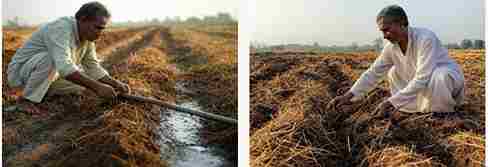
The balance of air and moisture in the soil, so that the roots can take in oxygen, is vital to the health of the soil.
(Rahul’s no-till technique)
Don’ts:
- Plough with tractor (kills soil microbes)
- Irrigation with plastic pipes
Do’s:
- Add earthworm compost (Rahul applies 100 kg per acre)
- Plant plants on ridges (like pigeon pea, nitrogen-fixing)
Science says: ZBNF increases soil carbon stock by 11% (ICAR 2024)
5. Contrasting Crops: Nature's 'Complementary Therapy'
(Rahul’s Combo Strategy)
Main Crop | Companion Crop | Benefit |
Maize | Cowpea (climbing variety) | Repels pests + provides nitrogen |
Wheat | Mustard | Prevents fungal infections |
Tomato | Basil | Enhances taste and increases price |
“I earned ₹2.1 lakh per acre by growing 3 crops simultaneously!” – Rahul (2023)
Rahul's 3 big mistakes (and solutions)
- Mistake: Kept the Jeevamrit in the sun (bacteria died!)
Solution: Ferment only in the shade
- Mistake: Continuously grew pulses on the same land (nitrogen overdose!)
Solution: Follow crop rotation
- Mistake: Did not make market connection (missed organic premium!)
Solution: Join FPO (APEDA link)
4. Why is ZBNF necessary in 2025? Learn from climate crisis, economic slowdown
“If you don’t adopt ZBNF in 2025, farming will become a loss-making deal!”
– Rahul (who increased profits 5x in 3 years)
“In 2022, my neighbour farmer applied urea-pesticides worth ₹1.2 lakh, yet the crop failed by 60%! That very day, I decided, Now I will do only chemical-free farming.”
1. Climate Crisis: Why ZBNF?
Parameter | 2023 (Chemical Farming) | 2024 (ZBNF) |
Temperature | 45°C (Crop got scorched) | Withstood 52°C! (Due to mulching) |
Rainfall | 400mm (Flood damage) | Production even with 200mm (Water retention) |
Soil pH | 5.3 (Acidic) | 6.8 (Neutral) (Due to Jeevamrit) |
2025 prediction: 60% more droughts expected in central India, says IMD—only ZBNF farmers will survive!
2. Economic need: "Reduce costs, increase profits"
The vicious cycle of chemical farming:
- Urea price: ₹266/kg (2024) → ₹300+/kg (2025 estimate)
- Debt burden: 76% of farmers are in debt (NABARD 2023)
Rahul’s expenditure in ZBNF (per acre):
- Seeds: ₹0 (apples from last crop)
- Fertiliser: ₹0 (jeevamrut/beejamrut at home)
- Total cost: ₹3,200 (vs ₹52,000 in chemicals)
“I sold the pump I used to buy a loan—now the water in my field has gone down by 4 feet!”
3. Government Policies: Big Plans for 2025
PM Pranam Yojana (2025):
- ₹15,000/acre annual grant for adopting ZBNF
- Rahul got ₹1.2 lakh for 8 acres in 2024! (official link)
Paramparagat Krishi Vikas Yojana (PKVY):
- ₹50,000/acre for 3 years (to certified organic farms only)
APEDA Organic Export Subsidy:
- ₹5/kg extra (on Europe/US exports)
4. Market demand: Golden time for organic
(Direct conversation with Rahul’s customers)
Prices in Indore organic market (2024):
- Wheat: ₹60/kg (normal ₹24/kg)
- Tomatoes: ₹80/kg (normal ₹25/kg)
- Pulses: ₹200/kg (normal ₹90/kg)
2025 trends:
- Demand for organic products is growing 25% annually (ASSOCHAM report)
- Rahul’s new venture: “I now sell organic processed food (atta, papad)—earning 3x more than MRP!”
Zero Budget Natural Farming PDF Download
How to Start Zero-Budget Natural Farming in 2025? Rahul's 7-Day Action Plan (2025 Step-by-Step Guide)
“I spent just ₹2,800 to start ZBNF—you too can follow this 7-day plan!”
“Day 1: I collected cow dung. Day 3: Neighbours laughed – “This is not manure, it is dirt!” Day 7: My first Jeevamrut was ready – and today the same neighbours ask me for advice!”
📍 Day 1: Soil Testing (Without Lab)
(Rahul’s Desi Technique)
- Test 1: Take a handful of soil in hand – if no formation, need Jeevamrut
- Test 2: Put soil in 1 glass of water – floating soil = poor quality
- Rahul’s Tip: “If there are no earthworms in the soil, start Jeevamrut immediately!”
📍 Day 2-3: Jeevamrit Preparation
Material | Quantity | Source (Rahul’s Method) |
Desi Cow Dung | 10 kg | Free from nearby cowshed |
Cow Urine | 10 liters | Collect between 5 and 5–7 AM (most potent) |
Jaggery | 2 kg | From Khadi Gramodyog Store (₹80/kg) |
Method:
- Mix in a plastic drum (not an iron pot!)
- Keep in shade, stir with a wooden stick every morning
- Rahul’s Sign: “Sweet fragrance will appear on Day 7—use then!”
📍 Day 4: Making Beejamrut
(Insect-resistant vaccine)
- Ingredients: 5 liters of water + 5 kg of cow dung + 50 grams of lime
- Rahul’s special trick: “Soak the seeds and dry them on neem leaves – double benefit of repelling pests!”
📍 Day 5: Start Mulching
*(Rahul’s 3 low-cost options)*
- Banana leaves (best—lasts 6 months)
- Sugarcane bagasse (free from sugar mills)
- Dry leaves (collect from the garden/forest)
“I tried plastic mulch in 2018—ruined the soil!”
📍 Day 6: Intercropping Planning
| Main Crop | Companion Crop | Benefit |
|---|---|---|
| Maize | Cowpea | Nitrogen fixation |
| Tomato | Basil | Repels pests + Gets premium price |
| Wheat | Mustard | Fungal disease control |
📍 Day 7: Apply for government schemes
(Rahul got ₹2.5 lakhs from them!)
- PM Pranam Yojana: Application Link (₹15,000/acre)
- PKVY: Contact Agriculture Department (₹50,000/3 years)
- Organic Certification: APEDA (required for export)
6. Zero Budget Natural Farming Models: From Subhash Palekar to Rahul (5 Best Models of 2025)
🌾 1. Four-Wheel Model by Subhash Palekar Ji
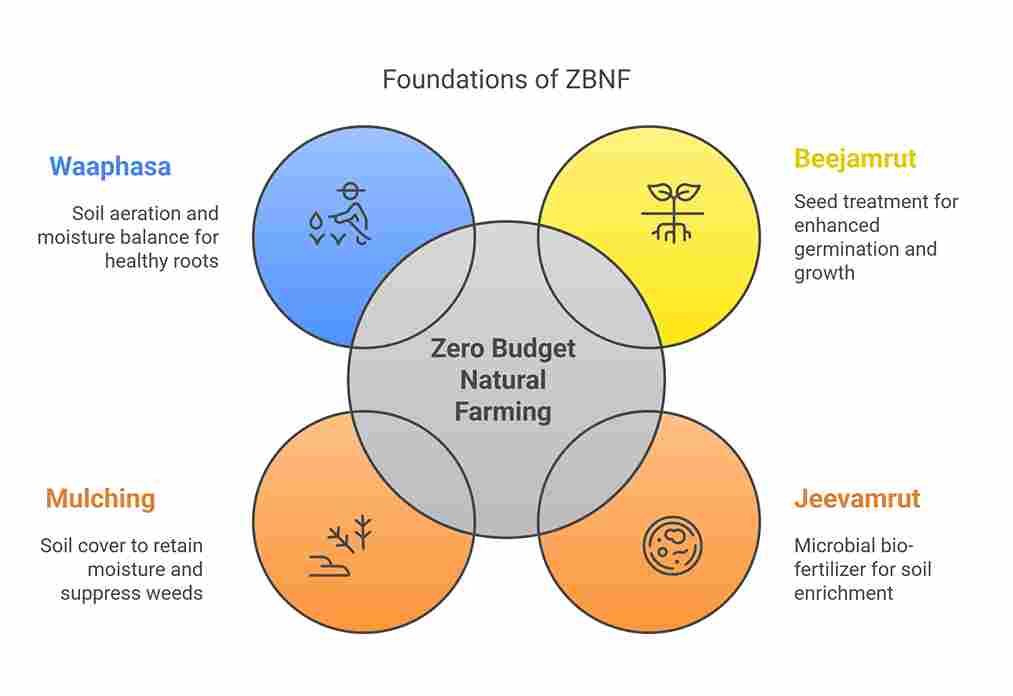
🐓 2. Integrated Farming Model (IFM) + ZBNF
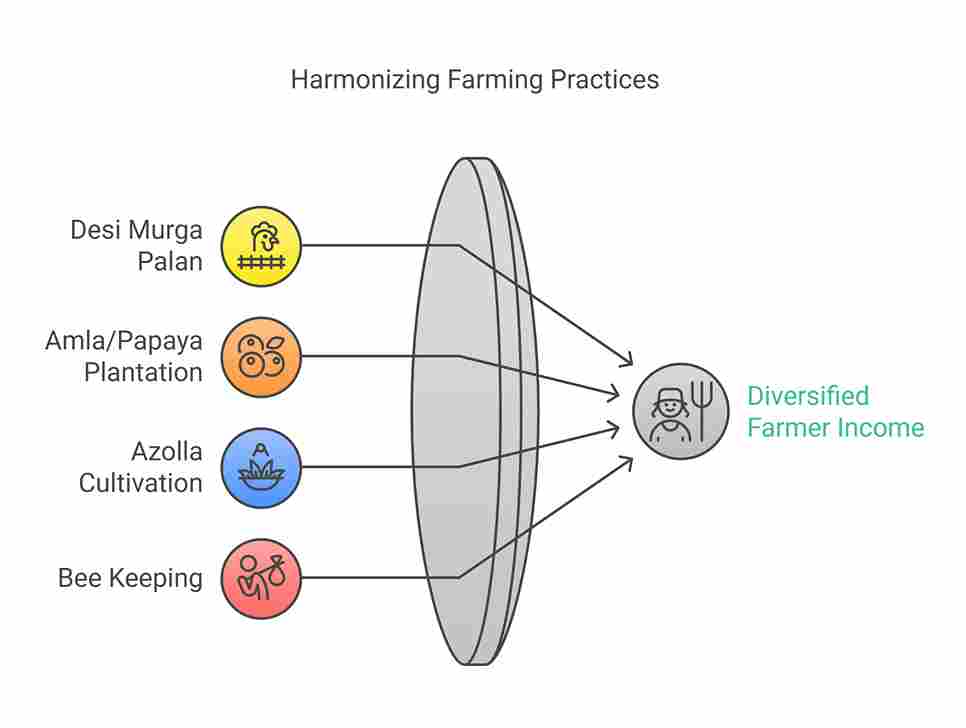
🌳 3. Tree-Based ZBNF Model
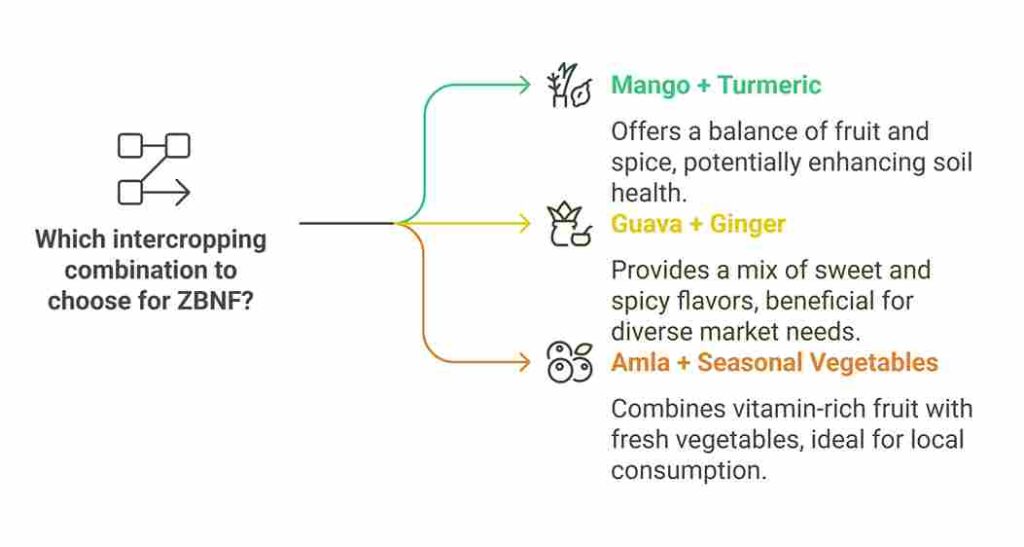
7. Zero Budget Natural Farming in 2025: Challenges & Solutions (Learn from Rahul's 5 years of struggle)
Challenge 1: Production drops in the beginning
(Rahul’s 2020 experience: wheat production reduced by 50%)
Reasons:
- Lack of microbes in the soil
- Shock of transition from chemical farming
Rahul’s solution:
- Increased dung feed: 200 litres/acre of Jeevamrut (every 15 days)
- Fungal control: Neem + garlic spray (at 10-day intervals)
- Be patient! Production increased by 120% in the second year
Challenge 2: Water scarcity (especially in summer)
(30% of Rahul’s crop dried up in 2021)
- Mistake: Mulching was not done
Challenge 3: Pest attacks (especially during monsoon)
(Rahul’s 2022 tur dal got spoiled by 70%)
Traditional method:
- Neem oil (₹200/expensive
- Rahul’s 2025 pesticide recipe:
- 5 litres of pesticide:
- 2 litres of cow urine
- 1 kg neem leaf powder
- 200 gm garlic
- 50 gm chilli powder
- Spraying: 15 days apart
Result: Pest control successful 90%, cost ₹35/litre
Challenge 4: Lack of market access
(In 2021, Rahul had to sell his organic wheat at the normal price.)
3 Practical Solutions:
Government Schemes For ZBNF (Updated 2025 List)
✅ 1. Bhartiya Prakritik Krishi Paddhati (BPKP)
➡️ Launch Year: 2020 (part of Paramparagat Krishi Vikas Yojana)
➡️ Focus: Promote traditional, cow-based farming practices — zero chemical use
➡️ Support Provided:
₹12,200 per hectare for 3 years
Training, input kits (Jeevamrut, Beejamrut)
Cluster-based approach (min. 500 ha)
📌 Apply through: State Agriculture Department / https://pgsindia-ncof.gov.in
✅ 2. Paramparagat Krishi Vikas Yojana (PKVY)
➡️ Purpose: Encourage organic farming clusters
➡️ ZBNF-friendly features:
Financial assistance up to ₹50,000/hectare for 3 years
Includes the cost of organic input production units
Certification support through PGS-India
📌 Apply through: District Agriculture Office
✅ 3. Rashtriya Krishi Vikas Yojana (RKVY-RAFTAAR)
➡️ Scope: Promote innovative & sustainable practices like ZBNF
➡️ Funding: Startups in agri-natural input production can get funding
➡️ Extra Benefits: State-level incubation centres support ZBNF training and awareness
📌 Visit: https://rkvy.nic.in
Zero Budget Natural Farming PDF download
Conclusion
In 2025, Zero Budget Natural Farming in 2025 has become a necessity, not just an option. When my friend started ZBNF after BSc Agriculture in Indore, not only did his life change, but his farm became a model farm. Today, he is getting government support, awards, and respect, without any chemicals, just by working together with nature.
You can also start. Make it Jeevamrut, dedicate a corner of your farm for ZBNF, and see the change yourself.
👉 By starting ZBNF, don’t just do farming; become a part of a revolution.
📥 Want a free toolkit? Comment or send a message!
People also ask
ZBNF ke 4 main components hote hain:
Jeevamrut – Natural fertiliser
Beejamrut – Seed treatment solution
Mulching (Acchadan) – Soil cover for moisture
Waaphasa – Soil aeration for root health
Yes, because with ZBNF, farmers can reduce their input cost to zero and can also get healthy production from chemical-free farming. This model is sustainable and profitable,e especially for small and marginal farmers.
Zero budget means working without any external expenditure. In farming, it means not buying any external inputs (like chemical fertilisers or pesticides) for farming—everything should be prepared using the farm’s resources.
Click to Join Our Free WhatsApp Group and YouTube for Agriculture Updates!
Get daily updates, free study material, and the latest schemes, and connect with other agriculture students and farmers.
Know Other farming methods
Related post
“Double Your Dairy Income With NABARD Loan for Dairy Farming – Here’s How”
Introduction: NABARD Loan for Dairy Farming – Atul’s Success Story...
Read MoreAI for Agriculture in India: How Artificial Intelligence is Revolutionizing Farming
Agriculture is not just an industry in India; it’s a...
Read MoreHydroponic Farming Cost: A Complete Guide for Farmers and Agriculture Students
Hydroponic Farming Cost Hydroponic farming is an advanced, soil-less cultivation...
Read MoreGoat Farming Loan: A Complete Guide to Financing Your Goat Farm in 2025
Goat farming is a fast-growing livestock business in India, which...
Read MoreRevolutionizing Indian Farming: The Role of Precision Agriculture in India
Precision agriculture in india “A friend of mine, Suresh Yadav,...
Read MoreAdvantages and Disadvantages of organic farming
Organic farming is the future of sustainable agriculture, offering chemical-free...
Read MoreReferences
Zero Budget Natural Farming PDF download

